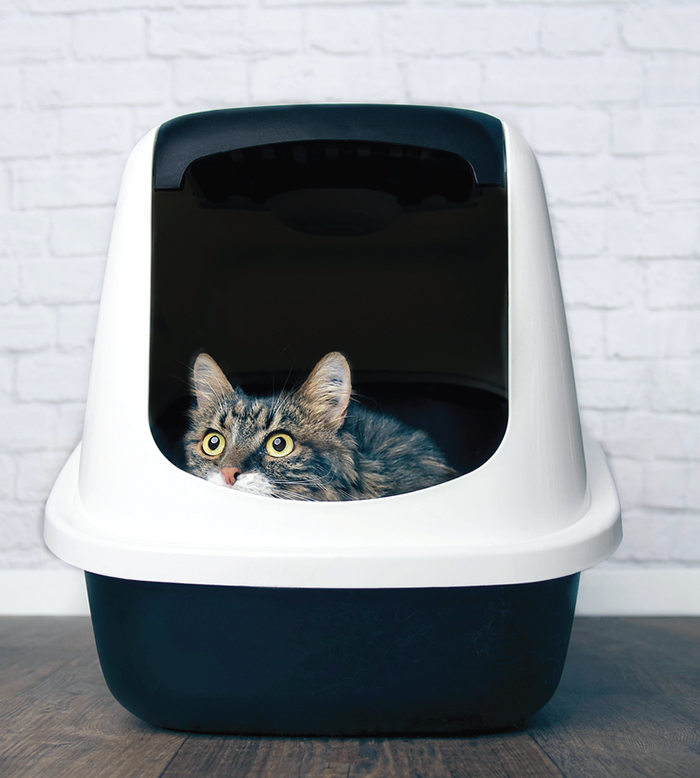Diarrhea is no fun for anyone. Your poor cat is constantly in the litterbox and doing some nasty cleanup grooming. The mess and smell aren’t pleasant for you either.
Tried-and-true treatments for diarrhea include probiotics, medications like metronidazole (Flagyll), and diet changes. But for some chronic cases, a fecal microbiota transplantation (FMT) might be in order.
“Chronic diarrhea in cats is frustrating for owners, cats, and veterinarians. FMT is considered a last-resort treatment modality after all other treatments have been attempted and thorough diagnostic panels have been performed,” says Leni K. Kaplan, MS, DVM, of Cornell University’s Small Animal Community Practice.
It’s a Transplant
A fecal microbiota transplantation, also called a fecal transplant or simply FMT, is when a veterinarian takes stool from a healthy cat and puts it into the sick cat’s intestines. Your cat’s digestive tract plays a huge role in her immune system, and part of both a healthy immune system and normal digestive processes is having a healthy community of normal gut bacteria.
Cats with chronic diarrhea may have normal, healthy gut bacteria. Abnormal gastrointestinal digestive flora (microorganisms, mainly bacteria), either caused by an underlying condition such as inflammatory bowel disease (IBD) or in response to the ongoing diarrhea and/or antibiotic use, can worsen diarrhea by preventing your cat from digesting food normally and producing formed stools.
By taking healthy stool that contains normal gut bacteria and placing it in your cat’s intestinal tract, your veterinarian can give your cat the boost he needs to stop the diarrhea cycle.
The Transplant
“This treatment requires making sure a healthy donor cat is available,” says Dr. Kaplan. The donor cat should have a known health history, be screened for disease and illness, and have a fecal analysis done to check for parasites or other signs of digestive issues.
Ideally, the donor cat should be eating the same diet as the cat receiving the transplant. This can help avoid any issues with food sensitivities. Bloodwork is recommended for the donor cat to make sure he or she doesn’t have any other underlying medical issues that might make them a poor candidate.
Once a good fit has been found, a stool sample from the donor cat is collected close to the time of the procedure. And, of course, fresh is best. The stool will then be mixed with a lactated Ringer’s solution and strained to remove debris.
The cat being treated will need some attention too, although most diagnostics will have already been done as part of the ongoing workup for the diarrhea. “The patient receiving the transplant will need enemas prior to the transplant and may need heavy sedation/light anesthesia during the procedure,” says Dr. Kaplan. Depending on the protocol followed, the cat may need to be under anesthesia for 30 to 45 minutes.
It is possible to buy freeze-dried stool samples packed into capsules. When swallowed by your cat, the capsule won’t break down until it reaches the intestines. It is still necessary to fully “check out” the donor cat to check on health and feeding.
“Fecal transplantation is most commonly used for cats with chronic diarrhea that have not responded to any other treatment modalities including diet trials, medications, and supplements,” says Dr. Kaplan. Very little research has been done on fecal transplants in cats or dogs, and it is a new treatment on the scene in human medicine as well. Because of this, we don’t yet have a standard protocol.
“As this is a “last resort” treatment modality, it is crucial that owners strictly adhere to their veterinarian’s recommendations including special prescription diets, medications, and supplements before declaring those treatments unsuccessful,” says Dr. Kaplan. “There have been some case reports of diarrhea resolving in cats following fecal transplant that didn’t respond to other treatments BUT not all cats respond to fecal transplantation and the response may wear off over time so the fecal transplantation procedure may need to be repeated.”
Basically, the best chances of resolving diarrhea for most cats is to stick with more common treatment methods. Going straight to a fecal transplant for the first bout of diarrhea is excessive, and doesn’t dramatically increase your odds of success.
Bottom Line
“There are still many unknowns about fecal transplantation in cats, but research is definitely underway,” says Dr. Kaplan. “As soon as we determine whether this modality is truly helpful and doesn’t harm the patients, veterinarians will be more comfortable and aggressive about recommending and performing it.”




